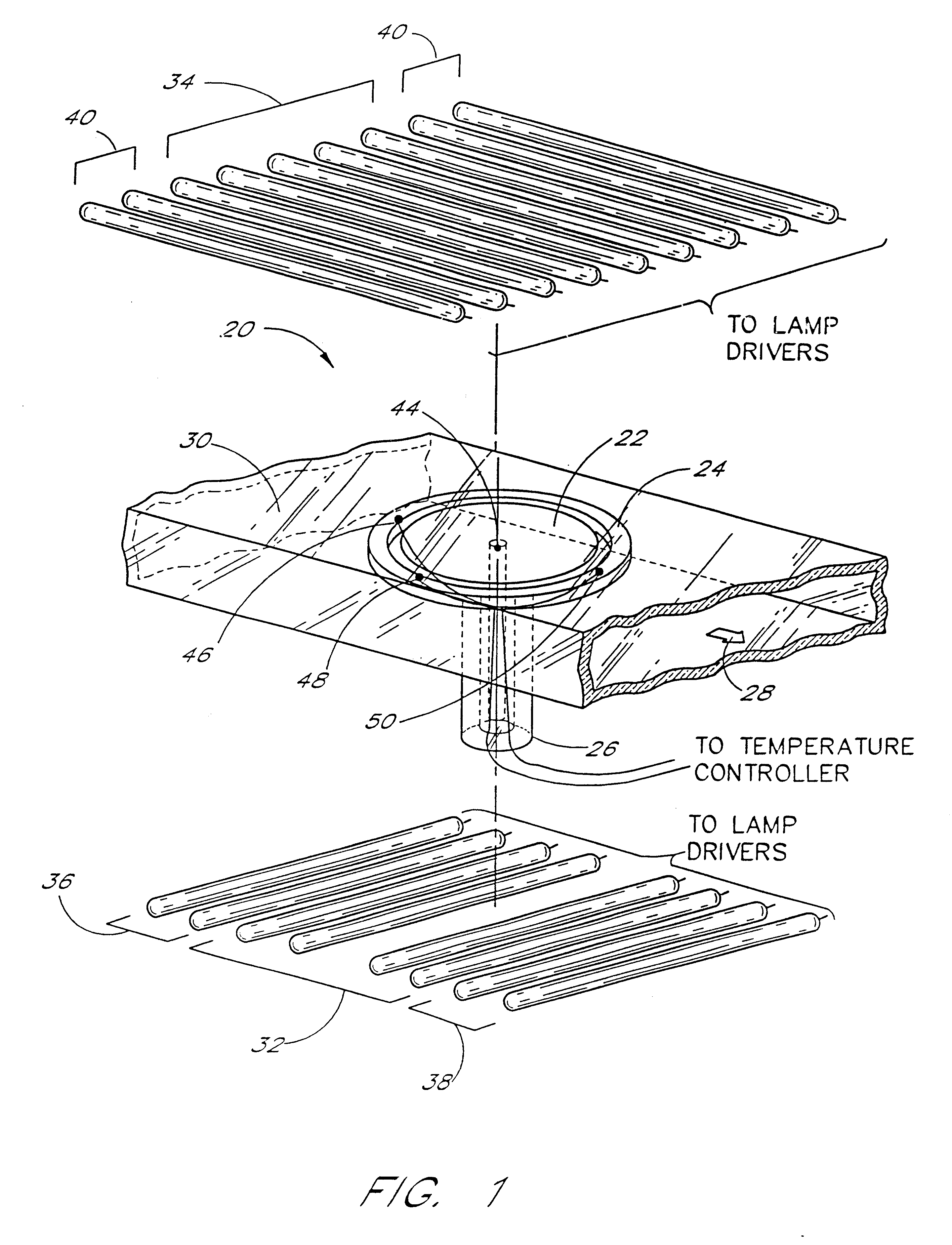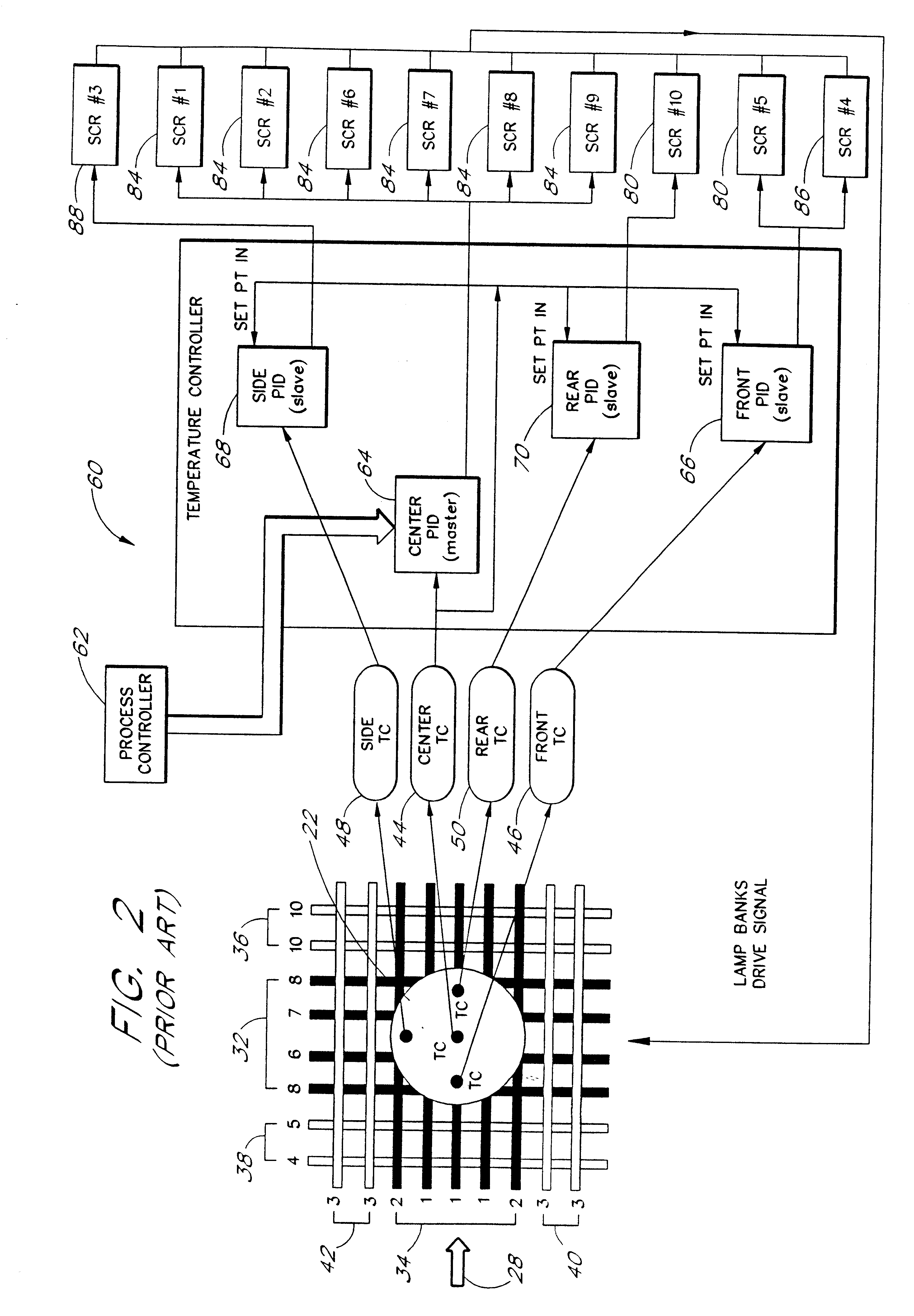Model-based predictive control of thermal processing
a model-based, predictive technology, applied in adaptive control, lighting and heating apparatus, instruments, etc., can solve problems such as increasing the difficulty of gradients, and no longer being isothermal in the system
- Summary
- Abstract
- Description
- Claims
- Application Information
AI Technical Summary
Problems solved by technology
Method used
Image
Examples
Embodiment Construction
of the Nonlinear and Neural Network Embodiments
Overview of Nonlinear RTP Process Control
In yet another embodiment of model based-predictive controllers, the linear model disclosed above can be further enhanced by using a nonlinear model of the process reactor. A preferred method for implementing the nonlinear model involves the use of neural networks. A preferred embodiment of the neural network based nonlinear predictive controller is a Neural Extended Prediction control (NEPco) neural model based predictive controller for the susceptor temperature control of the ASMA reactor.
FIG. 14A is a block diagram that illustrates a fabrication system 1400. A recipe block 1401 provides input into a NEPco process block 1402. The NEPco process 1402 outputs control signals to one or more SCR's that operate one or more lamps 1403. The lamps 1403 provide heat to a reactor 20 which is represented by a reactor process block 1404. A group of unmeasurable outputs from the reactor process block 1404 ar...
PUM
 Login to View More
Login to View More Abstract
Description
Claims
Application Information
 Login to View More
Login to View More - R&D
- Intellectual Property
- Life Sciences
- Materials
- Tech Scout
- Unparalleled Data Quality
- Higher Quality Content
- 60% Fewer Hallucinations
Browse by: Latest US Patents, China's latest patents, Technical Efficacy Thesaurus, Application Domain, Technology Topic, Popular Technical Reports.
© 2025 PatSnap. All rights reserved.Legal|Privacy policy|Modern Slavery Act Transparency Statement|Sitemap|About US| Contact US: help@patsnap.com



